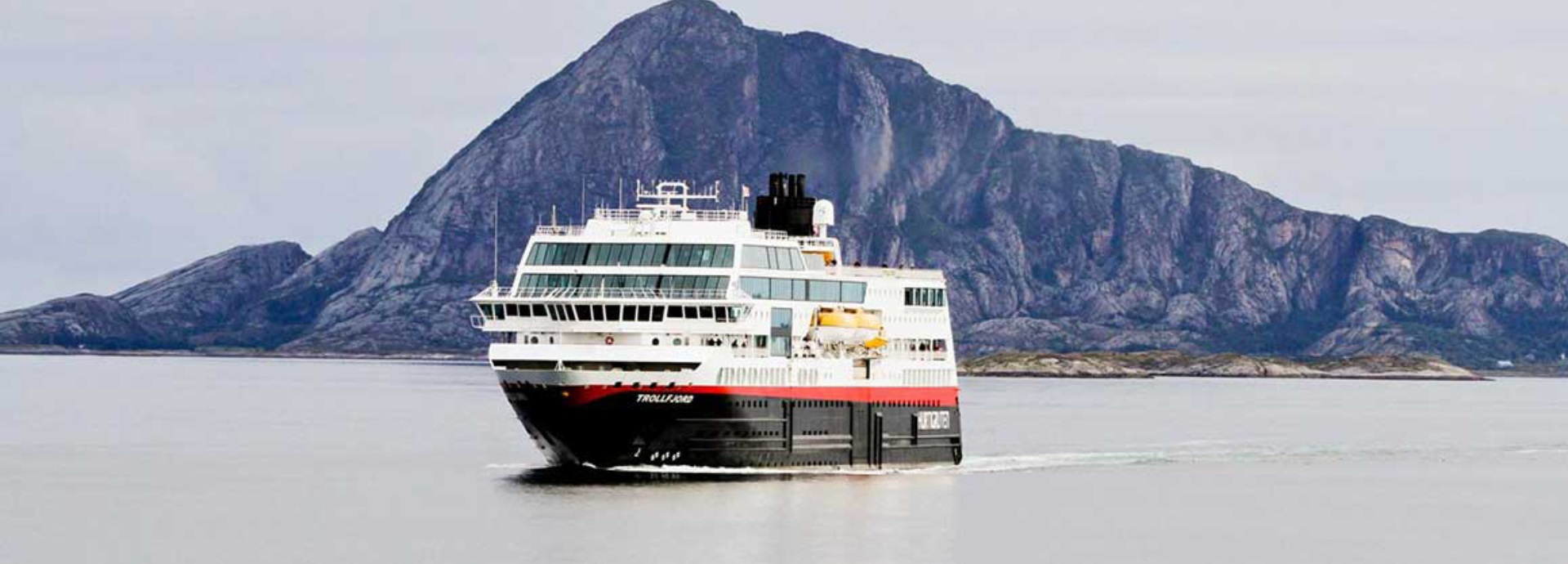

Lower NOx emissions protect the sensitive fjord environment
The MS Trollfjord is a Norwegian ship owned by Hurtigruten. The vessel has recently undergone a LowNox conversion in compliance with future environmental regulations regarding NOx emission reductions.
Challenge
- Helping the customer to conform with the Norwegian NOx emission targets
- Reducing the NOx taxes the customer must pay to the NOx Fund
Solution
- Delivering a turnkey solution for the LowNox conversion of the vessel’s Wärtsilä 9L32B engines, including engineering, procurement, installation, and project management
Benefit
- Decreased NOx emissions
- Reduced NOx taxes
- Up to 80% of the cost of the parts used in the modification compensated
Ship owners, especially those operating in sensitive environments, need to comply with environmental regulations regarding NOx emissions, among other regulations.
Turnkey solution from Wärtsilä
The MS Trollfjord, named after the spectacular Trollfjord in Lofoten, was built in 2002. The vessel is 135.75 m long and 21.5 m wide and can take 822 passengers.
The running hours of the vessel’s Wärtsilä 9L32B engines
were due for a major overhaul, which also affected the decision to do a LowNox conversion – among several other “green upgrades”. Wärtsilä offered a turnkey solution, including engineering, procurement, installation, and
project management. The project consisted of a conversion of the engines to the LowNox type Wärtsilä 9L32D, which reduces specific NOx emissions from 11.3 g/ kWh to 9.3 g/kWh. At the same time, the engine automation system was upgraded to
UNIC C2.
The people from Wärtsilä did an excellent job with the MS Trollfjord conversion project. With regards to the scope of the work, there were very few issues to discuss. Despite
the strict schedule we had for the project,
it was delivered in 18 days and on time. All in all, we were satisfied with the work, says Mr. Jakobsen.
Jakobsen says that the Trollfjord had a new propeller system installed at the same time, as part of Hurtigruten’s fleetwide green
updates. The system includes a torque sensor that measures the actual kilowatts the vessel uses.
Boosting the profile as a green company
According to Jakobsen, it is important for Hurtigruten to minimise the emissions with regard to the sensitive fjord and polar environments the company sails in. The company’s new buildings, for example, have hybrid systems which let the vessels
sail on electric power during certain parts of the routes.
This is especially important for our expedition ships that sail to the Arctic and Antarctic regions. The MS Trollfjord has now been in service for some time after the conversion.
Mr Jakobsen says that the experiences with the LowNox engines have been positive.
We have had no major problems! We, however, need to do a fine-tuning of some minor issues when starting-up in dieselmechanical mode, which I prefer. In Mr
Jakobsen’s opinion, there is no big difference in operating the engines from a technical point of view; the significant benefit is in the environmental benefit and the economy.
We now have a greener vessel that furthermore, gives
an economic advantage in the form of the engines having lower NOx emissions. Thereby, we pay reduced NOx fees to the government. In Norway, there is a NOx fund system in place where the ship operators pay a NOx tax, which then transforms into a fund
for investments.
Depending on our amount of NOx emissions, we pay a corresponding sum of NOx tax to the fund, explains Mr. Jakobsen adding that When we, for example, do a LowNox conversion we can get up to 80% of the cost of the parts used
in the modification. So actually, it is the money we have paid that we now can claim back. This LowNox conversion also supports Hurtigruten’s business and goals as the MS Trollfjord has now reduced emissions and has even more reliable engines.
I would for sure recommend other Wärtsilä customers with similar needs to do a conversion. There is not only the environmental aspect with lower NOx emissions in the box of advantages. In practice, you get an entirely new and up-to-date
engine without changing the engine block, concludes Tor Olav Jakobsen.
Thanks to lower NOx levels, our vessel’s environmental footprint will be significantly reduced. As a bonus, our shipping route and port fees in Norway will be reduced, in addition to also being able to receive funding from the Norwegian “NOx fund” for this conversion project.





